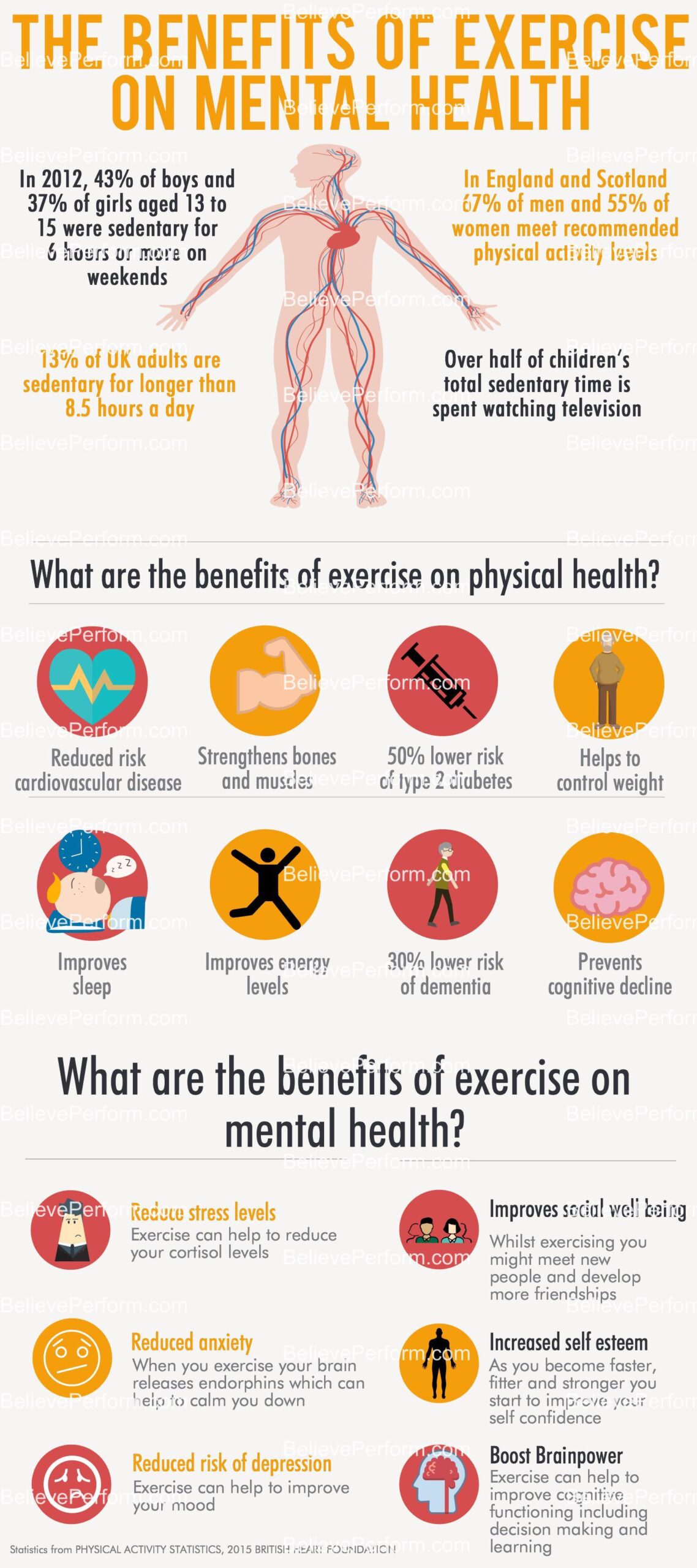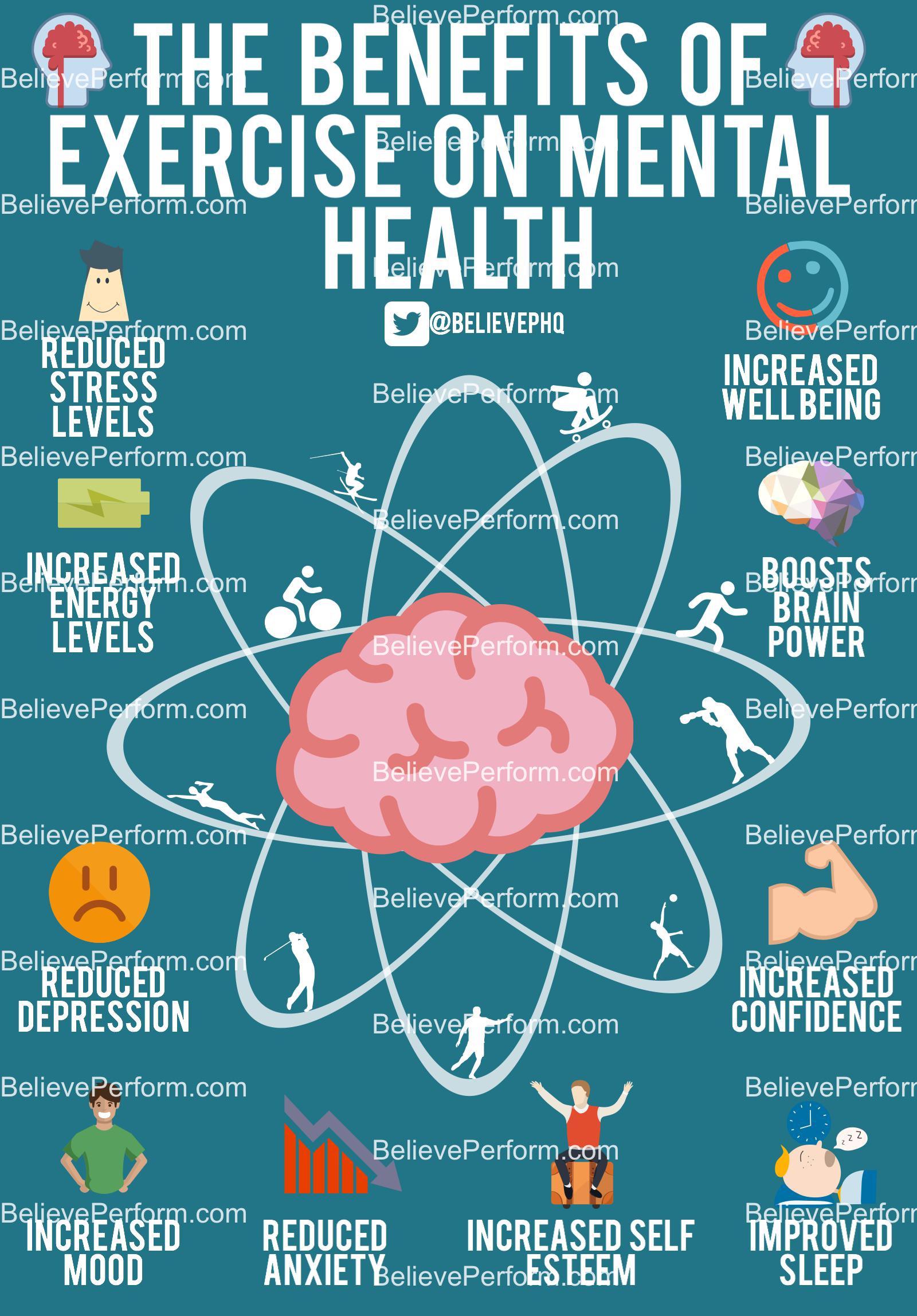Mental Health Benefits of Exercise in the USA: How Physical Activity Improves Mood and Reduces Stress
In the United States, mental health challenges have reached alarming levels, with over 21% of adults experiencing mental illness in 2025, according to recent CDC data. The fast-paced American lifestyle, compounded by economic pressures, work stress, and social isolation, contributes to widespread issues like anxiety, depression, and burnout. A 2025 APA survey reveals that 55% of Americans report high stress, leading to physical symptoms such as insomnia and fatigue, which exacerbate mental health woes. In urban centers like New York and Los Angeles, where sedentary jobs dominate, these problems are even more pronounced, costing the economy billions in lost productivity and healthcare expenses.
Fortunately, exercise offers a powerful, accessible solution to these mental health struggles. Physical activity in the USA is increasingly recognized for its role in boosting brain health, reducing anxiety, and improving overall well-being. Studies show that regular exercise can decrease depression risk by 26% and enhance mood through natural chemical releases like endorphins. This guide explores the mental health benefits of exercise in the USA, providing evidence-based insights, practical tips, and strategies tailored for Americans. Whether you're in a bustling city or a rural area, incorporating movement can transform your mental state, fostering resilience and joy.
The Mental Health Crisis in the USA: Why Exercise Is a Vital Solution
Mental health disorders are a leading cause of disability in the USA, affecting 57.8 million adults in 2025. Factors like economic inequality, the gig economy, and social media amplify stress, with young adults in states like California reporting higher anxiety rates due to job insecurity. The COVID-19 aftermath has worsened this, with a 25% increase in depression symptoms noted in recent surveys.
Exercise addresses these root causes by enhancing brain function and emotional regulation. A 2025 Frontiers study emphasizes how aerobic exercise elevates BDNF and serotonin, key for mood stability. In the USA, where over 40% of adults are physically inactive per CDC reports, promoting exercise could prevent millions of mental health cases. Unlike medications, which may have side effects, physical activity offers holistic benefits without dependency, making it an ideal first-line approach for many Americans.
For more on USA-specific health trends, visit our Elite Blog.
Key Mental Health Benefits of Exercise: Evidence from USA Studies
Exercise's impact on mental health is profound, supported by extensive USA-based research. The CDC highlights how physical activity boosts brain health, reducing anxiety and improving cognitive function. A New York Times analysis from 2025 explains that exercise increases blood flow, decreases inflammation, and enhances brain plasticity, leading to better mood regulation.
Specific benefits include:
- Anxiety Reduction: Exercise creates a biological shift that mitigates anxiety symptoms, with studies showing a 40% drop in poor mental health days among active individuals.
- Depression Alleviation: Running or walking for 15 minutes daily can reduce major depression risk by 26%, as per a 2025 fitness report.
- Improved Sleep Quality: Physical activity helps transition from wakefulness to sleep, aiding those with insomnia—a common depression comorbidity.
- Enhanced Cognitive Function: It prevents cognitive decline and boosts decision-making, crucial for aging Americans.
- Stress Resilience: Chronic sport participation reduces stress, while acute exercise improves cognitive flexibility, per a Nature study.
- Social and Emotional Boost: Group activities foster connections, improving self-esteem and reducing isolation.
In the USA, where mental health resources vary by state, exercise is a universal, low-cost tool. A UCLA Health report notes that among exercisers, poor mental health days drop by over 40%.
Types of Exercise for Mental Health: Tailored for American Lifestyles
Different exercises yield varying mental benefits, allowing Americans to choose based on preferences and location.
- Aerobic Exercise: Running or cycling elevates mood via endorphins. In urban USA, apps like Strava encourage community runs in parks like Central Park.
- Strength Training: Weightlifting builds confidence and reduces anxiety, ideal for gym-goers in fitness hubs like LA.
- Yoga and Mindful Movement: Combines physical activity with meditation, reducing stress; popular in wellness-focused states like Colorado.
- Team Sports: Soccer or basketball fosters social bonds, combating loneliness in suburban areas.
- Walking in Nature: Hiking in national parks like Yellowstone enhances well-being through "green exercise."
The NIA recommends moderate activities for 150 minutes weekly to reap mental rewards.
Practical Tips for Incorporating Exercise into American Daily Life
To maximize mental health benefits:
- Start Small: Begin with 10-15 minutes daily to build habits, avoiding overwhelm in busy schedules.
- Leverage Local Resources: Use free parks or community centers; apps like Peloton offer USA-specific classes.
- Combine with Nutrition: Pair exercise with a balanced diet for amplified mood effects.
- Track Progress: Use wearables like Fitbit to monitor improvements in mood and sleep.
- Overcome Barriers: For cold winters in the Midwest, opt for indoor options like home workouts.
- Seek Community: Join groups via Meetup for accountability.
These tips make exercise feasible for diverse American lifestyles.
Exercise and Mental Health: USA-Specific Considerations
In the USA, cultural factors like individualism can lead to isolation, but exercise promotes social engagement through gyms and classes. Rural areas benefit from outdoor activities, while urban ones use apps for virtual support. Policies like workplace wellness programs encourage participation, reducing national mental health burdens.
| Benefit | How Exercise Helps | USA Study Support |
|---|---|---|
| Anxiety Reduction | Biological shift via endorphins | 40% drop in symptoms (UCLA) |
| Depression Relief | 26% risk reduction | Running/walking study |
| Sleep Improvement | Better transition to rest | NIA guidelines |
| Cognitive Enhancement | Prevents decline, boosts function | CDC brain health boost |
| Stress Resilience | Lowers cortisol, improves flexibility | Nature sport study |
| Social Boost | Fosters connections | General well-being improvements |
Frequently Asked Questions About Mental Health Benefits of Exercise in the USA
- What are the top mental health benefits of exercise in the USA? Reduces anxiety, depression, and stress; improves sleep and cognition.
- How does exercise help with depression? Boosts mood chemicals, reduces risk by 26%.
- Is aerobic exercise best for mental health? Yes, elevates BDNF and serotonin.
- How much exercise is needed for benefits? 150 minutes moderate weekly.
- Can exercise replace therapy? It complements; not a substitute for severe cases.
- What exercises are popular in the USA for mental health? Running, yoga, strength training.



![8 Mental Health Benefits of Exercise [Infographic] | The Mindfulness Meditation Institute](https://mindfulnessmeditationinstitute.org/mental-health-benefits-of-exercise.png)

Comments
Post a Comment
Thanks for your response,May God bless you